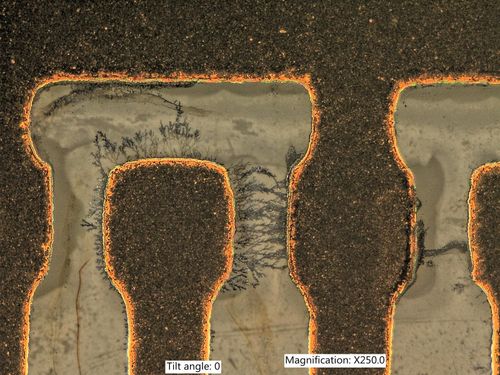Electrochemical reliability on printed circuit boards (PCBs) is a crucial factor in ensuring long-term performance and preventing failures caused by moisture, contamination, and electrical stress. Numerous factors contribute to the electrochemical reliability of PCBA. One of the most significant factors is flux and process residues left on the circuit assembly.

What is Electrochemical Reliability
Electrochemical reliability refers to a PCB’s ability to resist failure mechanisms like leakage currents (ionic contamination dissolved into atmospheric moisture), dendritic growth, and short circuit failures (electrochemical migration).
High-reliability hardware encompasses a range of variables across various processes, materials, and components. They include:
- PCB Fabrication: Wet, etch, rinse steps
- Component Fabrication: Plating, de-flash, rinse
- Soldering
- SMT Bottom Side
- SMT Top Side
- Selective / Wave Soldering
- Manual Soldering
- Rework
Design and Process Factors
- Leadless and Bottom Terminated Components: These leadless packages pose challenges due to low standoff heights, which can trap active flux residues and hinder outgassing.
- Flux Activity: The activator packages in solder fluxes attack moisture, which can mobilize metal oxides and accelerate ECM.
- Climatic Environments: Changes in temperature and humidity can result in condensation on electronic devices.
- Cleanliness: Best practice is to remove flux and process residues.
Reliability Metrics and Testing
- Surface Insulation Resistance (SIR) Testing: Electrical test method that measures resistance across inter-digitated comb patterns under conditions of heat and humidity.
- Functional Testing: Electrical test method designed to evaluate materials and processes on functional circuits (RF, clock, battery, temp, humidity, high impedance, LED).
- C3: Localized testing (extraction followed by Ion Chromatography) on specific components that entrap flux residues under bottom terminations.
- Ion Chromatography: Extraction analytical test method used to detect and quantify specific ions present on the circuit board.